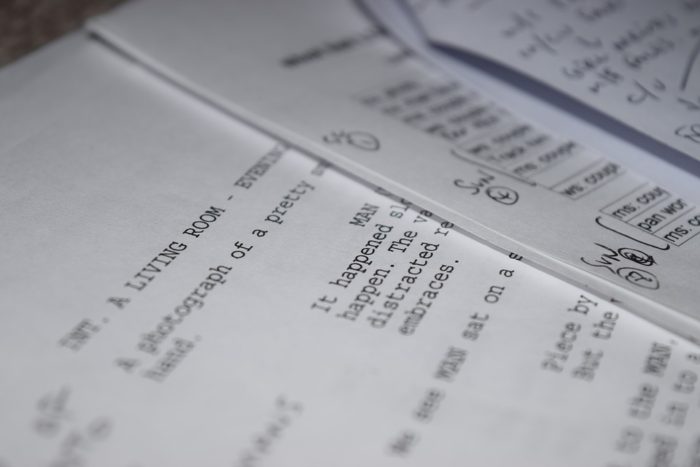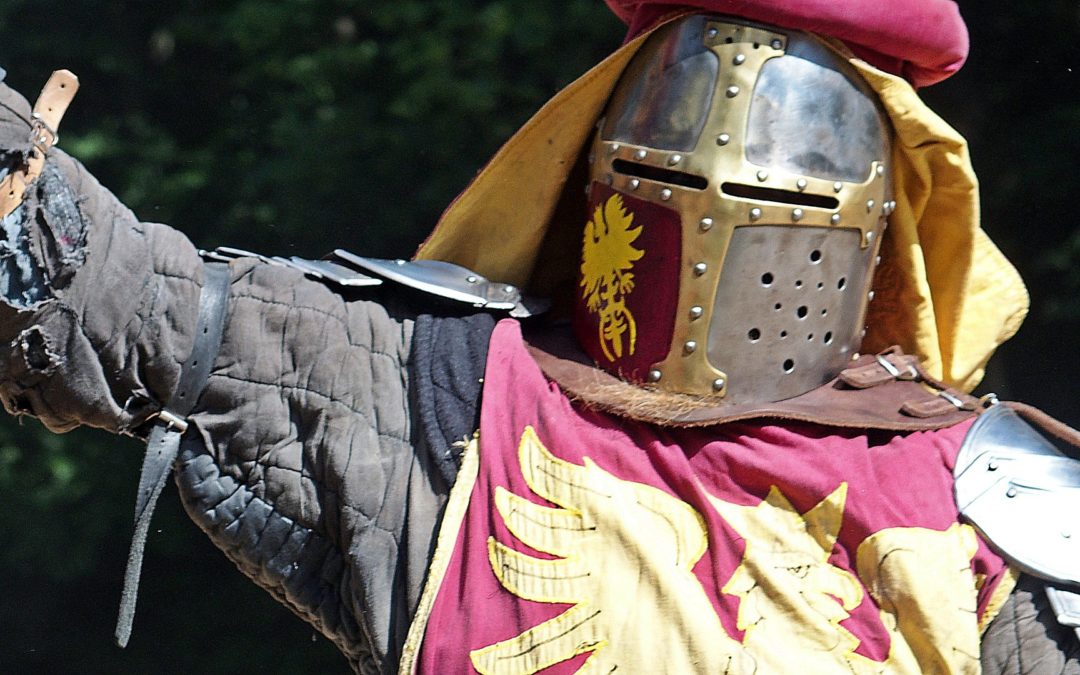
by John | Jan 9, 2019 | Movie Reviews and TV Reviews, Updates
In readiness for the eventual arrival of the final season, Ian Kennedy subjects himself to the whole thing again. Next up is the episode “Cripples, Bastards, and Broken Things”. Can anyone endure Ned’s honor, Stannis, the Red Wedding, and – worst of all – Arya’s unending journey from ‘annoying’ to ‘a different kind of annoying’, all over again? Or will the quality of the writing conquer all foes once more? Spoiler central here, if you hadn’t guessed… but in euphemisms that would make Tyrion blush, most of the time.
Yep, it’s interesting to see the young characters and actors while they’re really young again, and Theon while he’s happy to be an honorary Stark. The dialogue is just as fascinating second time around – the way the series gives people short, impactful, snappy dialogues is deep, powerful and wise. Lots of the minor characters, ignored and forgotten soon after we first see them, turn out to be more important later – it’s enjoyable to make connections as I watch the likes of Barristan, Gendry, Hodor (poor Hodor!), Thorne and the rest…
You have to pay close attention to recognise names, faces and details. The joust – and the killed knight at its inception – are part of an easily-missed storyline, part of the cover-up about the dead Hand. Maybe the books are easier on that front for audiences, because narration forces names to be repeated a lot more often, and gives room for direct exposition. Maybe. But it’s a rich tapestry of a series, even without knowing everything we could do.
One clever feature is how the magical features of the series are seeded. A coital discussion is the first reference to many of them at once – a very good place to hide an exposition scene, and Season One is full of others. Lots of magical things we hear about from a minor character later turn out to be true. She asks Viserys about dragons, and Viserys’ answers sound like excuses for them no longer existing. But then in another episode, Arya stumbles past some huge dragon skulls in the cellars of the palace, confirming that yes, they were real in this world, and very impressive.
When she is identified in a potentially hostile inn, Catelyn Stark is the latest woman in the series to earn our admiration, as she unites many rival families’ men to get Tyrion arrested. This is the moment when Tyrion’s playboy lifestyle first judders to a halt, and his own character is formed – he’s falsely accused and his life put in the hands of the twisted justice system of Westeros… for the first of many times.
Playback rating: 4/5
If you liked Ian’s take on “Cripples, Bastards, and Broken Things”, take a look at his thoughts on Episode Two: “The Kingsroad” by clicking here! or Episode Three: “Lord Snow” by clicking here!

by John | Dec 14, 2018 | Movie Reviews and TV Reviews, Writing Insights
Alfonso Cuarón’s latest film, ROMA, has been getting all kinds of acclaim, winning the Golden Lion at the Venice Film Festival and earning three Golden Globe nominations already. Guest author Cat Tebo takes a look at what we can learn from it about writing character driven stories…
A lot of new writers fall into the trap of prioritizing plot above all else, losing the characters and, consequently, the “heart” of their story. Ideally, a script should be a marriage between plot and character. The best way to go about this is by developing characters whose objectives and agency are so strong that they inform the plot, rather than characters being used as mere devices for the storyteller to force into the mold of how they think their story is “supposed”to be.
Alfonso Cuarón’s recent film, ROMA, is a perfect example of how a character-driven film should function, with characters so compelling and nuanced that there isn’t room for heavy, convoluted plot-lines or unrealistic story details. Instead, the characters are the story.
A big part of what makes rich characterization so important to story is that the strength of a story lies in the strength of its characters. Characters give stories humanity and, in doing so, a heart. Furthermore, the desires and objectives that drive characters to act are the same ones that should drive the story forward. In ROMA, everything that happens is a result of characters exercising agency and taking action in order to get what they want: it’s one of the most basic fundamentals of storytelling. Plot movement is all about getting characters from point A to point B; if there is no character arc, there is no story.
Fleshing out your characters is often a challenging task. In creating ROMA, Alfonso Cuarón was drawing inspiration from his own childhood, and familiarity no doubt makes for a greater sense of character. Even when writers are creating characters completely from scratch, the influence of memories and experience still plays a part—there is no such thing as objective fiction, and even the most original-seeming thoughts are a consolidation of some kind of previous knowledge.
Still, there are some important character elements to consider when figuring out who your characters are. Ask yourself what their weaknesses are, what their strengths are, how they cope with obstacles, what they need versus what they want, who they appear to be versus who they really are—for every question you ask, you shouldn’t hesitate to ask the inverse of it as well. Doing this ensures that you’re considering your characters from every possible angle and are covering every aspect of them you can.
Concept is usually what sells your story in the beginning, but characters are what make it stick. Likewise,you might be able to grab an audience’s attention with an interesting premise, but you won’t be able to hold it without intriguing characters.
Take a look at more writing insights from WriteMovies by clicking here!
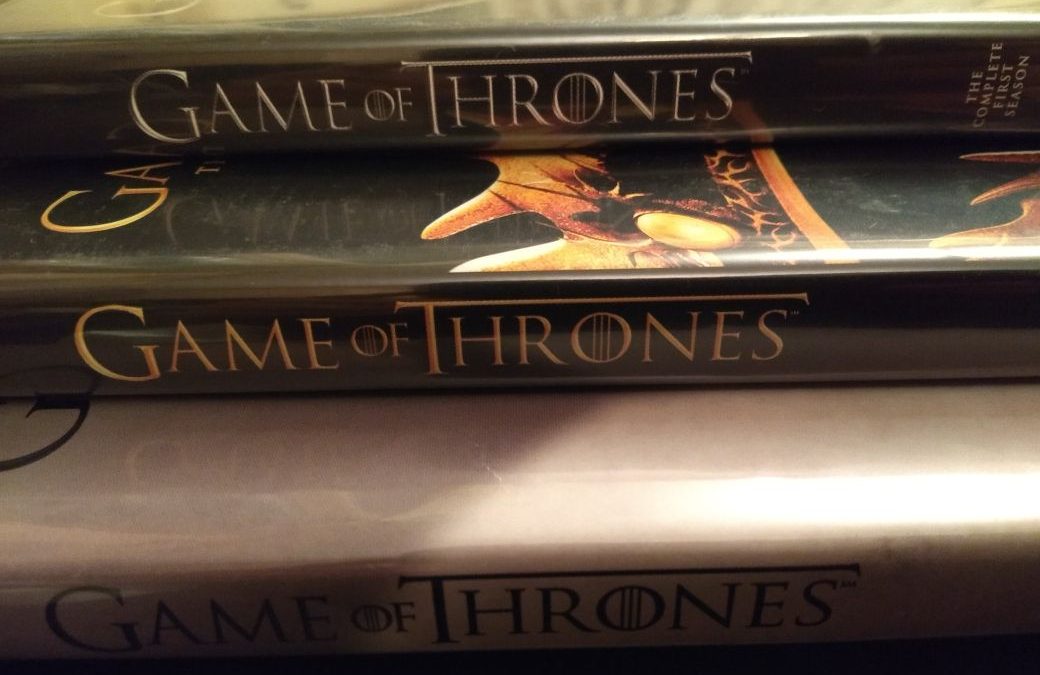
by John | Dec 7, 2018 | Movie Reviews and TV Reviews
In readiness for the eventual arrival of the final season, Ian Kennedy subjects himself to the whole thing again. Next up is the episode “Lord Snow”. Can anyone endure Ned’s honor, Stannis, the Red Wedding, and – worst of all – Arya’s unending journey from ‘annoying’ to ‘a different kind of annoying’, all over again? Or will the quality of the writing conquer all foes once more? Spoiler central here, if you hadn’t guessed… but in euphemisms that would make Tyrion blush, most of the time.
First of all, I do some math during the DVD homepage, and create an amusing ratio that demonstrates the series’ very impressive body count. But eventually I accept there is also an episode or two ready to watch.
Ned and the royal party arrive at balmy King’s Landing, and a series of excellent dialogues introduce us to the many powerful men who Ned must now navigate between as Hand of the King, as well as other enjoyable backstory intrigues.
“Someday you’ll sit on the throne, and the truth will be how you make it,” Cersei counsels Joffrey, among other dangerously wise advice. “Everyone who isn’t us, is an enemy,” she says, condoning his view that the Starks are enemies – though he doesn’t realise just how narrow her definition of “us” is, given his real parentage. “War is easier than daughters,” Ned concludes, reflecting the private view of men the world over – you’ll find way more stories by men about war, than about daughters. Sadly.
It’s enjoyable watching Daenerys earn our respect from nothing all over again – and her brother our hatred – as she starts to behave like the Khaleesi (tribal queen) she has become. It’s fun seeing Tyrion still the carefree rich playboy, before a world of cares catch up with him. Quoting his brother Ned, to cut short a pleasantry from Tyrion, Benjen says “nothing before the word ‘but’ matters” – neat. Dany becomes pregnant – something I’d almost totally forgotten about. Her burgeoning relationship with the savage, brutal tribal ruler Khal Drogo is still one of the most distinctive love stories I’ve ever seen, and is executed (sorry, no pun intended) in a remarkably short amount of screen time over this series.
Ned sets Arya a ‘dancing master’ to teach her artful swordfighting, and these are still among the most enjoyable training scenes I’ve seen anywhere, with some rich payoffs later. No coincidence that her tutor is from Braavos, and her transformation comes to fruition there later. Seeing her move with a sword, Ned is taken aback. Maybe he’s surprised that in Season One, she’s not yet really annoying,
Playback rating: 4/5
If you liked Ian’s take on “Lord Snow”, take a look at his thoughts on Episode One: “Winter is Coming” by clicking here or Episode Two: “The Kingsroad” by clicking here!

by John | Nov 6, 2018 | Industry News, Movie Reviews and TV Reviews
There are plenty of things that make us wax rhapsodic about a script: an exciting story, engaging characters, dialogue that jumps off the page… But we also look at a screenplay’s commercial aspects, such as its budget and chances at the box office.
That’s why it’s always important for a writer to always keep a finger on the industry’s pulse. Figuring out what sells and what doesn’t is vital if you want to be successful as a screenwriter, and right now, what’s selling is BOHEMIAN RHAPSODY.
The Queen biopic may have had a turbulent time behind the scenes, but that hasn’t affected its success. Variety reports that the film has taken a massive $72 million internationally in addition to $50 million domestically, adding up to a tremendous $122.5 million. For a film that cost $52 million to make, that’s a major success.
Our own Ian Kennedy has seen the film already. His verdict? “To my surprise, that hit all the right notes for me. Impressive screenwriting and musical concision, to balance everything they did, acknowledge the untold, and keep a PG-13 rating.”
Musical dramas have already enjoyed success this year with A STAR IS BORN being a critical and commercial success, and being eyed by many as a potential contender at the Academy Awards. Of course, this isn’t the only genre succeeding at the box office right now – but by paying close attention to these kind of things, we know what to look for when judging scripts for our competition.
It’s also interesting to note that BOHEMIAN RHAPSODY has achieved huge success at the box office despite its mixed critical reception, with a Rotten Tomatoes score of 60%. Much like the MAMMA MIA films, there’s more to success than just what the critics say!
We’re currently nearing the end of Standard Entry for our Winter 2019 Screenwriting Contest, from just $39 until this Sunday, 11th November. Don’t forget we’re also looking for scripts to be directed by 2x BAFTA winner and 2x Oscar nominee Habib Zargarpour, too – an opportunity not to be missed!
Click here to enter!

by John | Apr 9, 2018 | Movie Reviews and TV Reviews
We go into the Oasis to see what Steven Spielberg’s latest sci-fi action flick really has to offer… First Look: ready player one review by Jamie White.
I’m sure there’s a lot to like about READY PLAYER ONE. The adrenaline pumping action scenes, the unique and intriguing concept about virtual reality video gaming, the discourse it has about our current culture and gaming. The skepticism about how advanced technology can just take over our lives, and even give us an outlet to create a new life. I, however, did NOT enjoy this. At all.
 You may hear that a producer will only read the first 10-20 pages of a script – all the busy people we would be pitching to, rely on a great first ten pages to convince them a script is worth reading. This script would not (or should not have) made the cut.
You may hear that a producer will only read the first 10-20 pages of a script – all the busy people we would be pitching to, rely on a great first ten pages to convince them a script is worth reading. This script would not (or should not have) made the cut.
The constant, highly expository voice-overs from the main characters, lazily doing the heavy lifting (the world building). It was infuriating. And oh boy did the voice-over not end there. Dear God… I could go on and on about how the script let this film down, but I’m sure I won’t waste too much of your time, so here’s a quick list.
- That exposition throughout the first ten minutes. Then when the title card finally hit I thought “Oh thank ****! The actual film can start.” What was the first thing you hear next? That’s right – another voice-over. Man, oh man, did they overuse voice-overs in this film.
- The dialogue was incredibly cringey. Anyone could’ve written the dialogue for this.
- Certain “twists” or reveals were uninspiring and predictable. (People’s real-life identities, for example).
- There was no sense of time in this film – it really felt like everything happened within 2-3 hours.
- Character relationships were rushed, and, you guessed t, incredibly conventional and stereotypical. The romantic subplot advanced to “I love you” within 5 interactions between the love interests. I mean, c’mon.
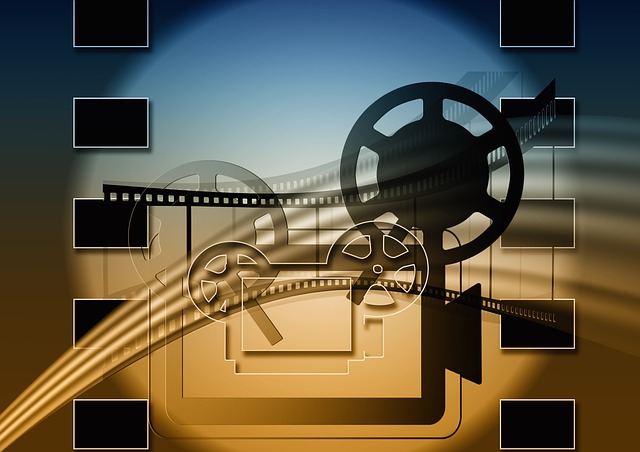 I’ll stop there before I get too frustrated, but I do just want to add on one small thing. This film was set in 2040, but there was nothing to suggest that (other than the massive virtual reality world). Every reference or cameo was to something that was made over 20 years prior. Anything from Overwatch to Sonic to Asteroids was used – but we didn’t get any notion of what 2040 pop culture was like. Maybe it’s a criticism of the huge focus on franchises, but it still felt very jarring. As was the very 80s centric soundtrack – I get why they went that route, but it felt so wrong – GUARDIANS OF THE GALAXY pulled it off perfectly, READY PLAYER ONE did not. If you wanna have the 80s culture play such an integral part have the protagonist be an 80s freak – it otherwise just felt out of place.
I’ll stop there before I get too frustrated, but I do just want to add on one small thing. This film was set in 2040, but there was nothing to suggest that (other than the massive virtual reality world). Every reference or cameo was to something that was made over 20 years prior. Anything from Overwatch to Sonic to Asteroids was used – but we didn’t get any notion of what 2040 pop culture was like. Maybe it’s a criticism of the huge focus on franchises, but it still felt very jarring. As was the very 80s centric soundtrack – I get why they went that route, but it felt so wrong – GUARDIANS OF THE GALAXY pulled it off perfectly, READY PLAYER ONE did not. If you wanna have the 80s culture play such an integral part have the protagonist be an 80s freak – it otherwise just felt out of place.
Phew! OK, so there’s my little rant. I didn’t wholly dislike the film, but there was much in there that took me out of the experience, and that’s what killed it for me.
What did you think of READY PLAYER ONE? I hope you enjoyed more than I did!

by John | Jan 5, 2018 | Movie Reviews and TV Reviews
Critics and audiences are continually growing apart when it comes to film, and that divide has been very apparent with the reaction to BRIGHT’s release via Netflix. Here’s Jamie White’s BRIGHT Review.

OK, so this is not the best film ever made. The story was lacking in places, the foreshadowing of certain plot points is heavy-handed and done with visual cues and prophecy rather than using the story. BUT, the concept is refreshing, the genre mix is intriguing, and it’s generally enjoyable film.
 After being shot by an orc, police officer Will Smith returns to duty with his partner Joel Edgerton – another orc. This creates immediate conflict with the two characters – Smith’s character is wary of the partner who didn’t have his back. But there’s also the issue of race – the humans don’t like having this orc on the force, and a group of them even plot to kill him, just so he’s not one of them anymore.
After being shot by an orc, police officer Will Smith returns to duty with his partner Joel Edgerton – another orc. This creates immediate conflict with the two characters – Smith’s character is wary of the partner who didn’t have his back. But there’s also the issue of race – the humans don’t like having this orc on the force, and a group of them even plot to kill him, just so he’s not one of them anymore.
Now this discourse on race may be fairly blunt, but think of it this way. The audience is made to think and confront the issues of race in our society, made literal here through the obvious race clashes between orcs and humans. But since there aren’t really orcs in our own society, they stand here as a blunt symbol for what really happens in much subtler ways in real life. The message may be blunt, but by swapping human race-differences with the orc race, audiences face up to our own issues in society.
But generally, this is such an enjoyable film. I can’t think of another film quite like it in terms of genre, tone and style – it truly is a refreshing, entertaining film.
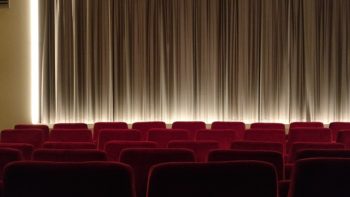 So then why the critic hate? Well, it isn’t Oscar-worthy in any way. It has problems with its plot and its antagonist (who doesn’t really have a great impact on the story) – which we’d have definitely flagged up if this script came our way. But the critical backlash seems like a bit of an attack on Netflix and the way cinema seems to be evolving. It feels like critics are against straight-to-streaming releases, and because of that, are scoring the film down. Just my opinion, but when some critics call this film the worst of 2017 – a year which also had JUSTICE LEAGUE (c’mon, at least BRIGHT has a cohesive plot and likable characters) – something seems to be up.
So then why the critic hate? Well, it isn’t Oscar-worthy in any way. It has problems with its plot and its antagonist (who doesn’t really have a great impact on the story) – which we’d have definitely flagged up if this script came our way. But the critical backlash seems like a bit of an attack on Netflix and the way cinema seems to be evolving. It feels like critics are against straight-to-streaming releases, and because of that, are scoring the film down. Just my opinion, but when some critics call this film the worst of 2017 – a year which also had JUSTICE LEAGUE (c’mon, at least BRIGHT has a cohesive plot and likable characters) – something seems to be up.
I’d recommend this film to anyone trying to escape the monotony of superhero films, sequels, adaptations, dry, overdone genre films. This is something refreshing, fun, and wacky. And you know what? Will Smith’s performance was fine!
© WriteMovies 2017. Exclusive to WriteMovies – To syndicate this content for your own publication, contact ian (at) writemovies dot-com.

by John | Dec 19, 2017 | Movie Reviews and TV Reviews
Ian Kennedy and John Sullivan both give their opinions on the latest installments of Disney’s STAR WARS film in this THE LAST JEDI review… SPOILER WARNING – there are some mild spoilers for STAR WARS: THE LAST JEDI ahead.

Ian says:
I really enjoyed this one, and as a writer and analyst there was plenty to make me smile about it. Like THE FORCE AWAKENS it shows the right amount of respect and reverence to the original series and characters while pushing the familiar premise and themes firmly into a new generation and new world. At times during the battles, key characters and their craft got an easy ride – often for long unexplained periods while it was clear that they ought to be taking a lot of fire (like the others around them). Other than that, a few gimmicky jokes (“I’ll hold”) and the ultimately pointless time at a casino – which wasn’t other-worldly enough for a STAR WARS movie, and unnecessary anyway – this one worked for me.
 From an analyst’s point of view, here are some of the things that were great. Somehow, ALL of the characters we care about – and there are a LOT of them now – get the right amount of screen time and strong character arcs that complement the main story. (R2-D2 only really gets one moment, but c’mon, BB8 is better anyway; the ever-annoying C3PO gets interrupted every time, and even Yoda gets another chance to mentor Luke.) We see Luke Skywalker complete his character arc from farmboy to transcendent Obi-Wan Kenobi. The lightsaber fights and the new uses of the Force are fresh and eyecatching, as are some of the uses of other tropes we’ve seen before (lightspeed, for example). There are plenty of new quirky aliens and droid moments – I liked the nuns at the Jedi temple, for example. Just as the plot and premise of THE FORCE AWAKENS mirrored the original STAR WARS (EPISODE IV), this one mirrors THE EMPIRE STRIKES BACK in that it’s a long dark night of the soul for the Resistance, who are down to almost nothing by the end. This film finds new shades of grey to enrich its binary central conflict (the Resistance vs the Dark Side) – with new kinds of dilemma and battle for the hearts of the central characters, and reference to the arms dealer selling to both sides, for example. There are new kinds of heroism, self-sacrifice and resistance – contrasting the strategic rivalry between the wasteful hotshot methods of Poe, and the more subtle and clever methods employed by his superiors. All of this explores the series’ themes and conflicts further and better than before.
From an analyst’s point of view, here are some of the things that were great. Somehow, ALL of the characters we care about – and there are a LOT of them now – get the right amount of screen time and strong character arcs that complement the main story. (R2-D2 only really gets one moment, but c’mon, BB8 is better anyway; the ever-annoying C3PO gets interrupted every time, and even Yoda gets another chance to mentor Luke.) We see Luke Skywalker complete his character arc from farmboy to transcendent Obi-Wan Kenobi. The lightsaber fights and the new uses of the Force are fresh and eyecatching, as are some of the uses of other tropes we’ve seen before (lightspeed, for example). There are plenty of new quirky aliens and droid moments – I liked the nuns at the Jedi temple, for example. Just as the plot and premise of THE FORCE AWAKENS mirrored the original STAR WARS (EPISODE IV), this one mirrors THE EMPIRE STRIKES BACK in that it’s a long dark night of the soul for the Resistance, who are down to almost nothing by the end. This film finds new shades of grey to enrich its binary central conflict (the Resistance vs the Dark Side) – with new kinds of dilemma and battle for the hearts of the central characters, and reference to the arms dealer selling to both sides, for example. There are new kinds of heroism, self-sacrifice and resistance – contrasting the strategic rivalry between the wasteful hotshot methods of Poe, and the more subtle and clever methods employed by his superiors. All of this explores the series’ themes and conflicts further and better than before.
All in all, the movie ticks all the right boxes. Sure, not an Oscar-winner, but a great blockbuster sci-fi action adventure and a strong STAR WARS movie. And let’s be honest, those are more fun than most Oscar-winners.
Meanwhile, John says…
A long time ago, in a galaxy far, far away there used to be amazement and anticipation surrounding STAR WARS. But after watching THE LAST JEDI I’m only left with a remarkable feeling of being underwhelmed.
It’s hard to put into words how disappointed I am with THE LAST JEDI, but I’ll do it anyway. THE FORCE AWAKENS, while not magnificently original, felt like a STAR WARS film. The plot followed the same pattern as both A NEW HOPE and THE PHANTOM MENACE, stakes were high, the new characters were well-introduced and we spent a good amount of time with one character we loved.
THE LAST JEDI was just… a whole lotta nothing. For a 2-and-a-half-hour flick, there’s a lot going on, but nothing ever really happens. The film never really expands on what it’s logline is. The last of the Resistance forces try to escape the clutches of the First Order, while Kylo Ren and Rey come into conflict with themselves and each other. You’d imagine that’s a good set-up for a STAR WARS film, right? Wrong.
There is no expansion on the story, or the characters. Whole subplots, that are made out to be vitally important and integral to the storyline are made redundant with certain character and writing decisions. Characters that were made out to be hugely important were shoved aside meaninglessly. This film just did not have an end goal in sight. There were no major consequences in the film, or rather, none that were logically formed from the plot or character decisions. We are more or less in the same spot that we were in at the start of the film thematically and in terms of the greater story – nothing of any substance happened… at all.
THE LAST JEDI was just so… sigh… What was it Yoda used to say? “Do, or do not. There is no try.” Well, there was no trying with this film’s plot.
Who do you agree with? What did you think of THE LAST JEDI? Let us know on our Twitter and Facebook pages!
© WriteMovies 2017. Exclusive to WriteMovies – To syndicate this content for your own publication, contact ian (at) writemovies dot-com.



